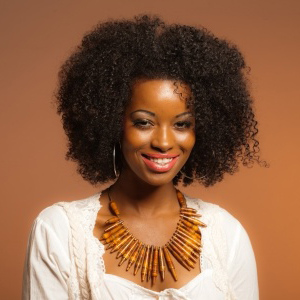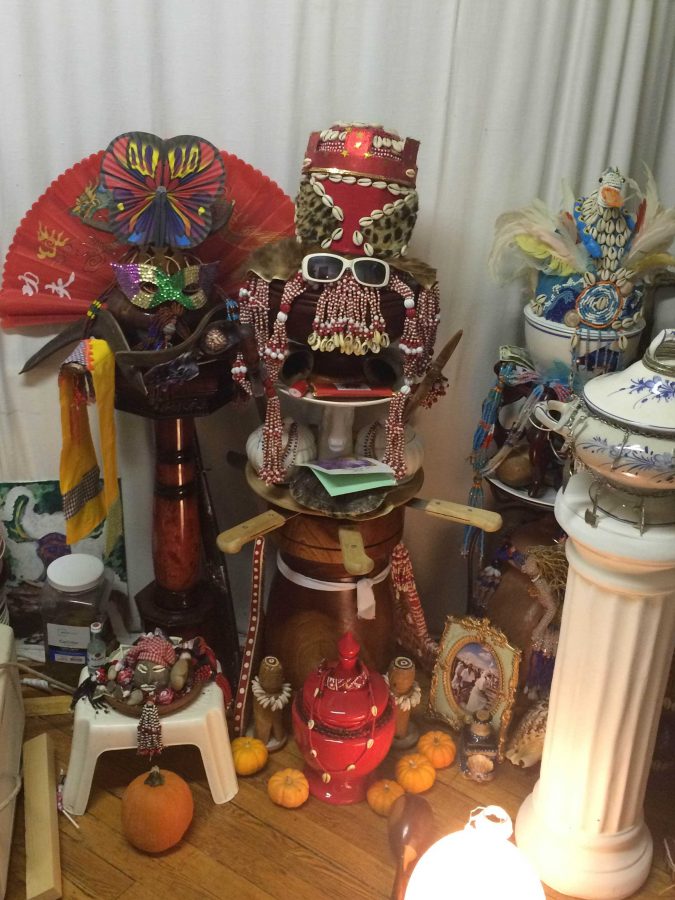By Mahneerah Griffin

On your head right now you have nearly 150,000 follicles of hair. Depending on what your ethnic background is, those DNA-infused strands could be straight and thin, wavy and voluminous, or kinky and coiled. They’re variously colored and come in innumerable textures. But how is it possible to determine whether the hair on your head is categorized as “good hair”?
This topic has been heavily argued in the African American community, but recently after Comedian Chris Rock’s documentary “Good Hair” which explored the trials and successes that many African American women endured during their quest to achieve “good hair,” that the whole world is now coming up with their own conventions and creations of what they believe “good hair” really is.
We now live in a culture where the ideals of beauty are still mostly European. According to TV, magazines, and orgasm-filled Herbal Essences commercials, an attractive woman usually must have straight, long, polished hair that’s preferably light in color. That covers about 20 percent of women who fit that portrayal – what about the other 80 percent? Are they ugly ducklings? The women who fit society’s elementary standards don’t always agree with them. Emilee Davis, a 29-year old former Midwest native begs to differ on these impossible archetypes. It’s not Davis’ vibrant alabaster skin or wide brown eyes that some would notice about her first. It’s her dirty blonde hair.
“My hair is very fine, thin and straight. I’m a natural blonde, but my hair has darkened up,” says Davis as she strokes hair that is pulled into a ponytail. With perfection comes a struggle and that’s one of the many things Davis is experiencing with her “society-standard” hair.
“As I’ve gotten older, I’m trying to figure out my hair. I’ve tried lots of products and I’m still trying to figure out what works. It’s very hard finding products that won’t dry out my hair yet still keeps it moisturized. I’m learning my hair again,” says Davis matter-of-factly.
There are tons of women, like Davis, doing just that. There are a great deal of products on the market that cater to specific hair types, hues, and textures. These products are created and advertised as creating the standard in hair, or “good hair.” Davis is proof that the assumption that Caucasian women are the models of what good hair should be is a completely false notion that makes great profit. These advertisements and products trouble women who don’t fit into the “good hair” blueprint. They’re trying to achieve something that’s so unattainable.
So, what’s “good hair” to a Caucasian woman from the Midwest?
“Good hair means a couple of things. It’s healthy with shine. Very long, flowing, and well styled. It’s basically well-maintained, very healthy looking hair,” says Davis.
Let’s get back to the media and its role in creating these standards of beauty. Celebrities, who impact society and consumers significantly, create impossible and unrealistic standards of beauty – and hair. Take supermodel Naomi Campbell, for example. She has graced thousands magazine covers with long, flowing, straight hair. In actuality, her own hair is thin and her hair line is non-existent. You would think she would take time out to care of her own hair instead of damaging it more with use of weaves and wigs, but she has an image to maintain. Not to say she’s not a beautiful woman, but this image can be destructive to women all over the world, especially the younger generation of women, like 19-year-old Glenda Mirjah. This fresh-faced Grenadian beauty with thick, black-brown colored, hair experienced first-hand the sting of society’s expectations of “good hair.”
“I always got annoyed of random people just touching my hair and asking if it was real [in high school]. Don’t touch my hair if you are a stranger,” she said with sass.
But this is the norm in mostly urban areas. “Good hair” is often presumed to only be on the heads of women of mixed race or with island background. No African American woman could have healthy hair without it being a weave. Weaves and hairpieces are popular amongst a great number of women in African-American urban communities. These weaves and extensions are pricey as much as they are common. Mirjah isn’t giving into the hype.
Sidebar: Can a Lace Wig Make You Sick?
“I never really bought hair. But I did spend money a couple of times to cut my hair. The most expensive salon visit was $80.”
The importance of hair when it comes to one’s appearance isn’t something that is limited to people in the United States. It’s worldwide. Mirjah, whose father is from Grenada and her mother from Trinidad, learned about different hair textures and lengths while growing up in a diverse household, but hair wasn’t of the uppermost importance in her life.
“Hair is not really important to my religion or culture, however most of my family members on my mother’s side always kept their hair extremely long reaching to their lower back or even further. My father’s side of the family comes from a more African ancestry. They always kept their hair short because it’s more thick and hard to take care of,” states Mirjah.
So how do the societal standards of beauty affect a young woman of a different culture?
“I don’t think society’s standards of beauty are fair. I feel like people tend to cover their roots, literally, with weaves and extensions or even damaging their hair so they can look ‘beautiful’.
Society sets a certain standard of beauty when we are really all beautiful in our own way.”
So, what’s good hair to a young, Grenadian woman?
“Good hair is healthy, thick, naturally curly hair that is not too hard to handle. No split-ends, no breakage, and looks good after a long night of sleeping, which is probably nonexistent,” Mirjah says with a giggle.
The hair extension industry is a booming business that’s slowly impacting the entertainment industry and the everyday woman. The most popular brand of hair extensions out on the market now are Virgin Remy. This type of hair is unprocessed and as close to an African hair texture as one can buy. Virgin Remy is sold in three textures: straight, curly, and wavy. It’s very silky with a natural sheen and hardly ever sheds when brushed or combed. Virgin Remy hair varies in location as well. There’s Brazilian and Peruvian. This hair can cost around $60 per pack to $3,000 a pack.
With this amazing quality of “good hair,” is it really worth it? In order to get Remy hair to sell, Hindu women in the west are getting their heads shaved. According to the article “Indian Sacrifices Keep the West Supplied with Hair Extensions” on thenational.ae, Hair is presented as a sacrifice to the hundreds of thousands of gods in the Hindu pantheon for reasons as diverse as seeking to ward off ill-health to begging to bring luck and fortune.
But these women have no clue that their sacrifices are making hair companies worldwide millions of dollars. These Indian women are naïvely bestowing their “crowning glory,” only for it to be sold and used as an expensive American and European woman’s accessory. So once again, there’s the question: is your worth being measured by the hair on your head? Society will tell you “yes,” but what if hair is your only option for beauty?
That’s the question that 24-year-old Tammy Johnson (not her real name) is faced with on a daily basis. At the age of sixteen she was diagnosed with Alopecia Areata, a disease that is appearance-altering and life changing. According to WebMD, alopecia areata is a type of hair loss that occurs when your immune system mistakenly attacks hair follicles, which is where hair growth begins. Symptoms include bald patches on the head and scalp, significant hair loss on the head and body. 40% of African American women suffer from this disease.
Sidebar: Hair Loss: The Price of Beauty?
“It all started when clumps of my hair began falling out. I knew something was wrong because I took good care of my hair. It was revealed to me by my mother that my grandmother suffered from this same condition. I had to readjust my whole life,” says Johnson.
At first glance you would never believe that Johnson was suffering from alopecia. Her round face was adorned with deep brown colored, thick, kinky hair. It was revealed later during the interview that it was indeed a wig.
“I honestly don’t know how I would have survived with this condition without wigs. Wigs are life-savers for people like me [who suffer from alopecia]. It’s sad that there are negative assumptions that come with women wearing wigs”
In the African-American community when it comes to wigs, there are negative and positive opinions when it comes to wigs and extensions. The positive being that some women want to give their natural hair a break from heat so they would incorporate wigs and weaves into their hair routines. There are also the women who feel the need to just “switch up” their style; they use wigs and extensions as an accessory. The negative responses include that women are “fake” or that they’re ashamed of their natural hair texture, but none of those are the case when it comes to Johnson. Her wigs aid in her survival in such a harsh society that’s obsessed with appearance.
“I’m not brave enough to walk out the house with my naked head. People would stare and make jokes. That’s why I wear wigs; they’re like a small getaway from the trials of dealing with my condition. They make me feel beautiful. It’s not until I come home and take [the wig] off that I realize that I have alopecia,” says Johnson with a melancholy yet hopeful tone.
“One day I will be strong enough to walk out the house without a wig, but until that time comes I will continue to wear my wigs. I’m planning on getting a blue one next week. I’m gonna rock it!”
So, what’s “good hair” to a sufferer of alopecia?
“Good hair should make you feel beautiful! It can be bought or grow from your scalp. If it’s growing from your scalp, it should be healthy without damage. The texture or color shouldn’t matter. If you buy it, it shouldn’t matter the cost, as long as you’re confident wearing it.”
Let’s face it, how you look is a huge determining factor in your mental well-being. “Good hair” is a sign of a great grooming and of great health. Needless to say, “good hair” has many clarifications based on the countless cultures and races that make up America. It’s not only limited to the African-American community. Society will continue to place emphasis on a specific median of beauty until society breaks the cycle. We’ll have to accept the kinky, straight, thick, thin, and weaved or wigged. The only dialogue that should be exchanged when it comes to hair is its overall health, not its look.
How does one determine if they have “good hair” or not? Well, society isn’t the first place where you should acquire the answer. Unless you’re content with being misinformed with dozens of theories on what exactly is “good hair” and who possesses it. The only straightforward and culturally uncomplicated answer one could give when it comes to classifying “good hair” is “I DON’T CARE.”
Women of any race should be able to wear their hair however they want without feeling like it has to be some outstanding cultural or political point. “This new generation of women is slowly but surely going against societal norms when it comes to appearance.
But America still has a long way to go.




